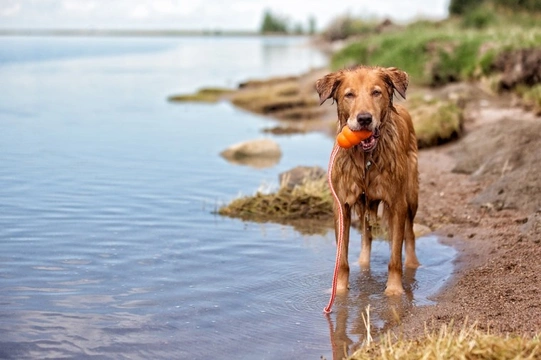
Do dogs need to be taught to swim?
Most of us remember being taught to swim, either by family or at school; and how the process can be a long one with some potentially unnerving moments, all of which some of us took to better than others!
However, something you might not know is that babies up until around six months old demonstrate a natural and instinctive behaviour when placed in water, which propels them and enables them to swim and maintain buoyancy. While they don’t actually posses the strength and build to swim properly, making the right movements isn’t something they have to be taught; although this innate ability disappears after a few months of life, which is why people have to be taught to swim rather than us all just knowing how.
But what about puppies and dogs? Do dogs need to be taught to swim, does swimming come naturally to dogs, or are they like human babies, meaning that young puppies can swim but when they get a bit older, they forget or lose the ability?
This article will tell you if dogs have an innate ability to swim, or if puppies need to be taught to swim, plus a few other things you might need to know too. Read on to find out if dogs instinctively know how to swim.
Do dogs need to be taught to swim?
No. And this is probably just as well, because logistically teaching a dog to swim or explaining it to them would not be too easy!
Just as human babies instinctively make the right movements to keep them buoyant and to swim if you put them in the water, so too do dogs; and unlike human babies, this is not something they outgrow or forget.
Even if you have an adult dog that has never been in water in their life, if they fell into water or were encouraged into water deeper than they could stand in, they would swim instinctively.
Dogs don’t need to be taught to swim; their instincts kick in when they need them, and they make the movements we know as the doggy paddle to stay afloat!
Can all dogs swim?
We’ve just explained that dogs don’t need to be taught to swim, because they make the relevant swimming movements naturally and instinctively without being shown how. However, things get a bit more complicated from here, because this doesn’t mean that all dogs can actually swim.
All dogs can (and do) make the right swimming movements in water; but not all dogs can swim effectively, and some may be unable to keep their nose above water, and will sink.
This is due to the conformation of certain types of dogs; most notably, those with very short legs like the Corgi and Dachshund, and those with very flat faces, like the English bulldog and the Pug.
This is because overly short legs cannot propel the dog, whilst an overly flat face means the dog’s whole head needs to tilt upwards at such an acute angle to permit them to keep their nostrils out of the water that their bodies tilt to a position that makes them sink, often instantly.
Other conformation factors can work against some dogs too, such as a heavy build and disproportionately large and heavy head, like in the case of the English bulldog.
So ultimately, while all dogs can and do make swimming movements, not all dogs can swim.
Do you need to manage your dog’s first introduction to swimming?
Even if your dog comes from a breed with a well-known natural affinity for swimming, their first introduction to swimming should be handed carefully to keep them safe, set the rules, and ensure they don’t get scared and so, put off the whole concept.
Teach your dog obedience and respect first of all to ensure they don’t leap into water before you give them the go ahead, which might be not just inconvenient but also dangerous.
Pick a spot that is safe from pollution, seasonal hazards like potentially toxic algae blooms, plus underwater debris and even wildlife like swans, which can be very aggressive.
Also, ensure that the water is comfortably warm, which can be hard to determine as even in the height of summer, the water in ponds and lakes will be colder than the air and will take many days of hot weather in a row to become comfortable for swimming.
Finally, pick a spot where your dog can get in and out without problems, and which they will be able to see and find easily to return to.
Use a harness on your dog so that you can help them out of the water if this turns out to be necessary.
Also, don’t try to introduce your dog to swimming until they are at least 6-8 months old, and possibly older. Dogs need a reasonable amount of stamina to swim, which puppies won’t have; and regardless of the age of your dog, keep their first swimming session short, to avoid fatigue.



